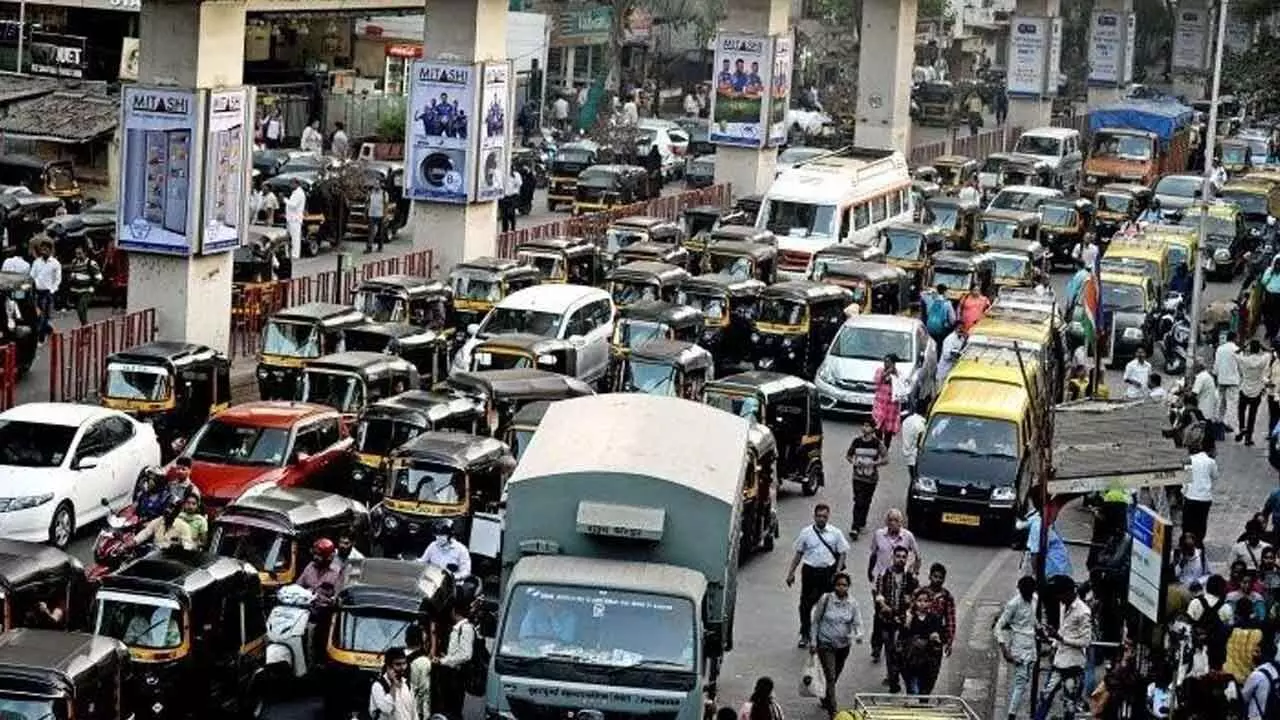Transportation woes hit IT professionals hard

Hyderabad: In the Western sector of the city, a significant challenge persists for professionals employed in the IT/ITES industry—a pronounced lack of efficient public transportation options near their workplace locations. This insufficiency in accessible transport infrastructure poses numerous hurdles for employees striving to commute conveniently and punctually. Many individuals within this workforce are grappling with the recurring issue of inadequate transit options, hampering their ability to reach their workplaces promptly.
Upon arriving at the Raidurg metro station via the Hyderabad Metro Rail (HMR), a prevalent concern among a majority of IT employees revolves not only around the dearth of accessible public transportation but also the formidable challenges posed by the unyielding traffic congestion in the vicinities surrounding their workplaces.
Speaking to The Hans India, Srinivas, Envoy Global
, an IT employee, says, “The influx of IT employees resorting to private transportation has inadvertently become a catalyst for substantial traffic congestion within the city, resulting in detrimental delays that impede timely arrivals at their destinations. This heavy reliance on private vehicles has significantly contributed to the burgeoning traffic gridlock, amplifying the urgency for a multifaceted approach to alleviate this predicament.”
Amidst these predicaments, a palpable discontent brews among IT employees grappling with the intricate web of transportation woes. Their grievances extend beyond the mere inadequacy of transport accessibility, delving into the realm of the chaotic and often unmanageable traffic snarls that afflict the routes leading to their office locations.
The rapid proliferation of residential hubs in key localities like Madhapur, Kondapur, Lingampally, Gachibowli, and adjoining areas such as Kokapet, Financial district portends an imminent surge in population density. This burgeoning trend foretells a future trajectory marked by an escalating populace, a development that, if left unchecked, threatens to precipitate substantial traffic upheavals, potentially spiraling into unmanageable chaos on the roads.
Another IT employee, Prashanth, working at Natcracker, says, “Tackling the traffic conundrum during peak hours demands a multi-pronged strategy. Collaboration between the government and private enterprises is pivotal to introduce diverse transportation alternatives, recognising that no singular solution can comprehensively address the issue.”
Implementing a collaborative framework with private companies to diversify transportation options holds immense promise. This includes fostering partnerships to introduce innovative modes such as two-wheelers, cycling initiatives, and potentially other creative means of commute. This approach not only broadens the spectrum of choices for commuters but also aligns with the evolving preferences and needs of the populace, he added.
Another IT employee, Sai Tej, says, “The current metro connectivity up to Durgam Cheruvu and Raidurg, while a significant stride, still falls short in catering to the dispersed nature of IT offices scattered across the western expanse of the city.
While the initiation of mini-bus services by TSRTC is a commendable step, it is evident that the existing fleet might not adequately meet the burgeoning demand during peak hours. This highlights a pressing need for TSRTC to augment its bus fleet substantially.”
The essence lies in the synergy between governmental initiatives and private enterprise partnerships. This collaborative endeavor not only diversifies commuting options but also fosters a more resilient and adaptable transportation ecosystem, paving the way for a more harmonious and efficient urban commute experience - Prashanth, Netcracker India Private Limited
A proactive approach by TSRTC to bolster its bus fleet, coupled with a strategic expansion plan encompassing a broader network of routes, is imperative. This expansion should seek to bridge the existing gaps in accessibility, ensuring that commuters from diverse localities within the western sector have reliable and efficient transportation options to reach their workplaces - Sai Teja, IT employee
The impending surge in residents within these localities paints a worrisome picture of potential traffic congestion and disorder in the future. This foreseeable trajectory, if unaddressed, may snowball into a critical situation where the existing transportation infrastructure might struggle to accommodate the burgeoning demands of a swelling populace - Srinivas, Envoy Global














